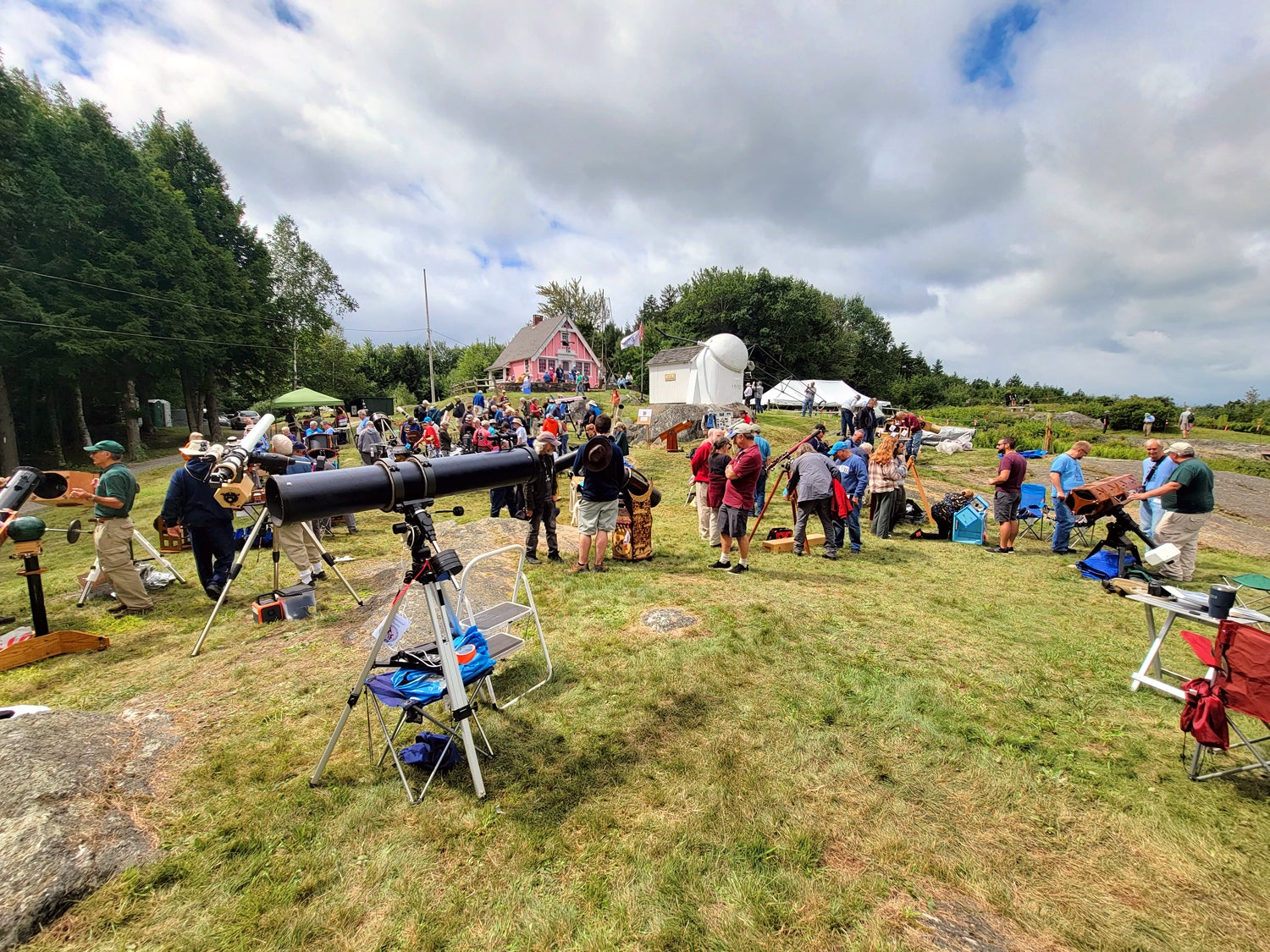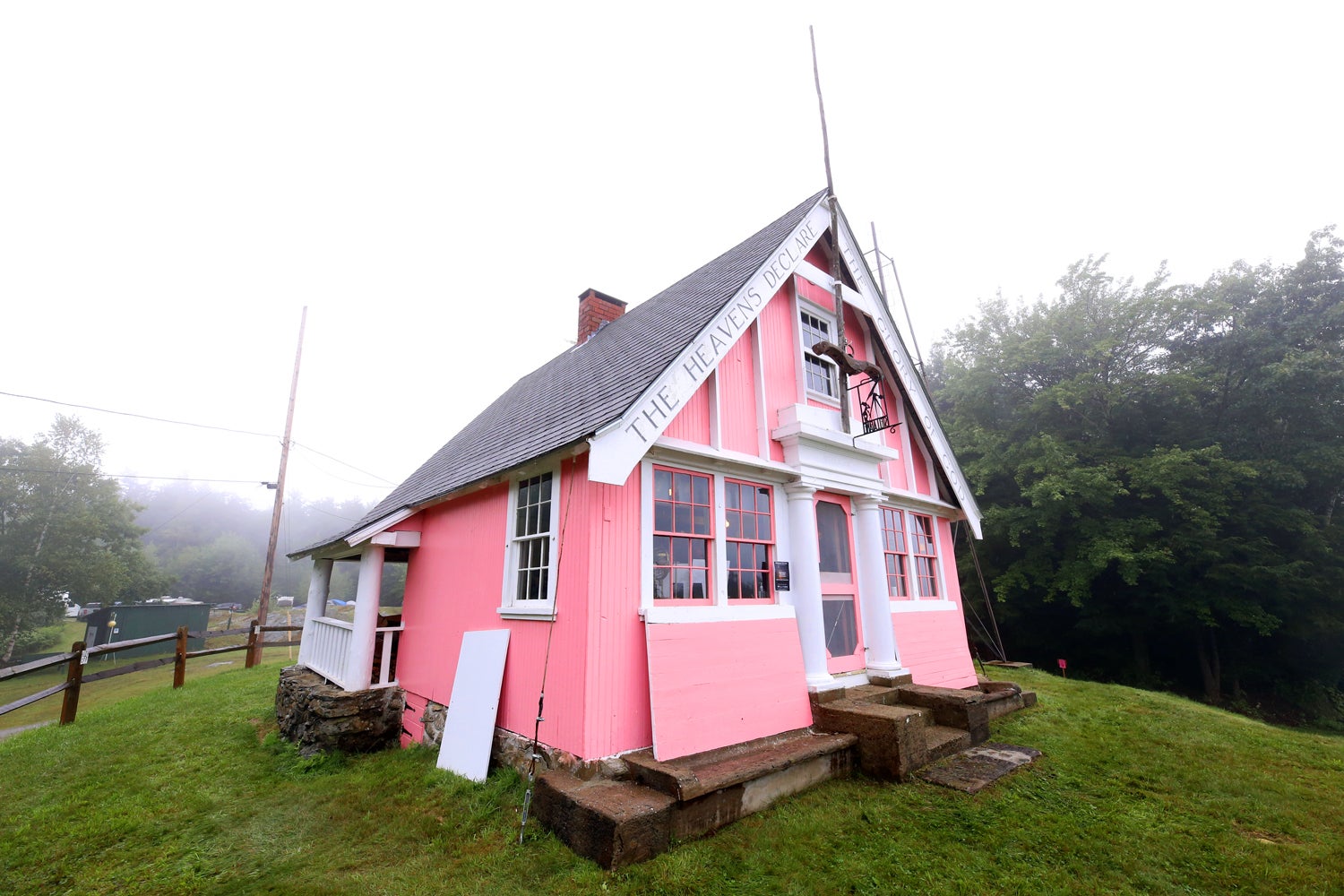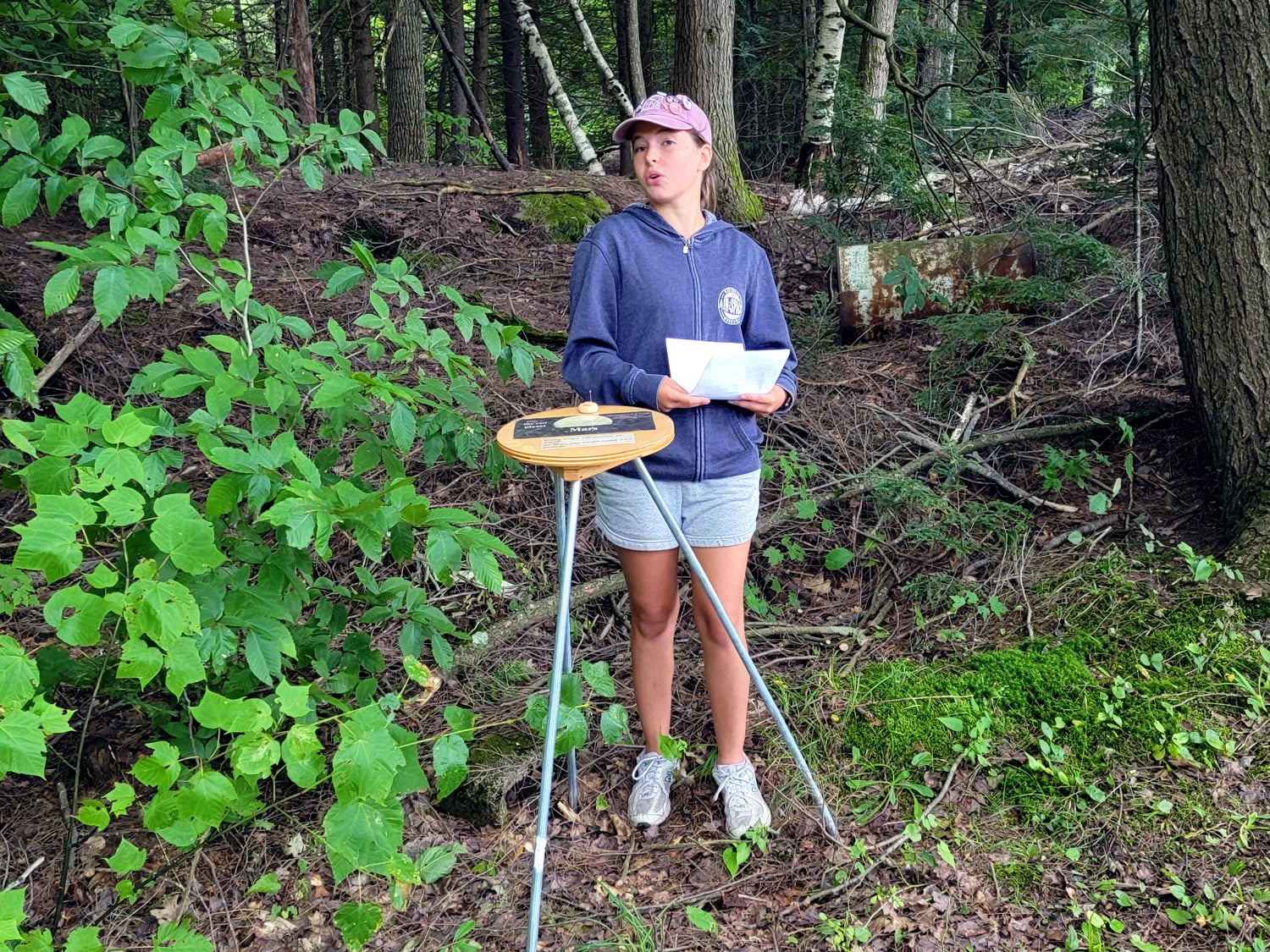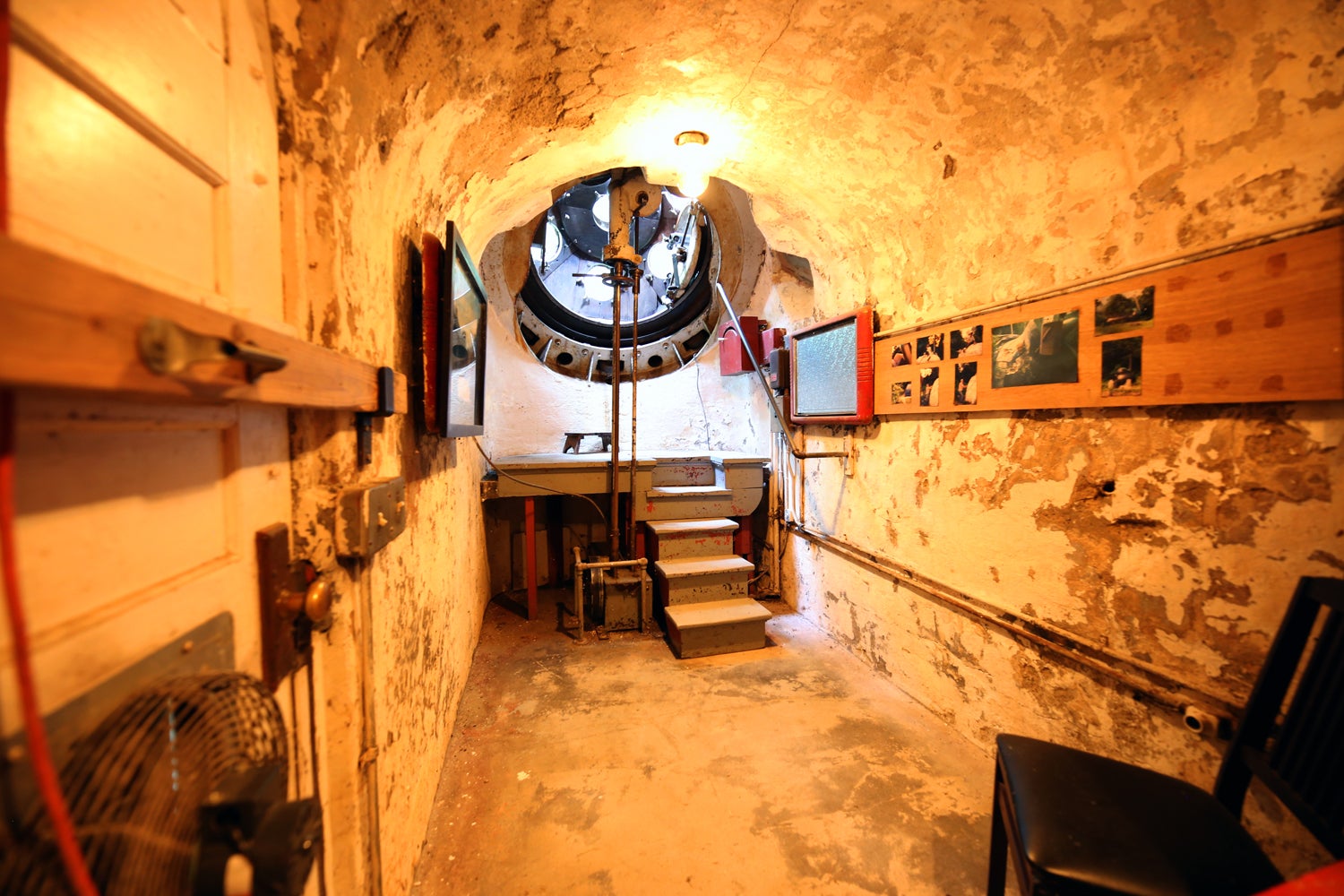
Astronomy can be a lonely activity, with you and your telescope out under the stars. But for decades now, astronomy enthusiasts have also gone out of their way to cluster together at so-called star parties. Observing together under the night sky, sharing enthusiasm and discoveries, listening to talks by experts in the field, and building telescopes, sharing info on cameras, and other equipment has been a big part of the hobby.
In August the oldest and most storied of all American astronomy meet-ups, Stellafane, in Springfield, Vermont, celebrated its 100th anniversary with a wonderful gathering. What is the oldest amateur astronomy meeting doing in southern Vermont? The host town is a very old manufacturing center, and in the late 19th Century came to prominence when James Hartness brought the machining tool company Jones & Lamson to town. By the early 20th Century, talented machinists who were also intellectually alert turned to a new hobby by building telescopes. (In those days premade commercial telescopes did not exist.)

Historic hilltop
Hartness built a huge estate (that is in more recent times a hotel) before being elected Vermont’s Governor. One of his close friends, Russell W. Porter, was destined to become a great telescope designer. Hartness designed a revolutionary so-called Turret Telescope in which the optics stay outside while the observer can view the heavens inside a heated room. Porter adapted Hartness’s design to a reflector-based instrument, which he and the Springfield club later built on a hilltop outside Springfield.
At the very end of 1923 the telescope making movement in Springfield caught fire, and the Springfield Telescope Makers, the local club, erected a clubhouse on what they called Breezy Hill. The annual meeting sprang up, and came to be called Stellafane, meaning “shrine to the stars.”
This year was special for everyone who attended, the centennial causing a big focus on Stellafane’s storied past. Activities cranked up on Thursday, August 17, and lasted through the weekend, with cleanup and restoration of the site happening on Sunday the 20th. Talks occur underneath a huge tent area at the meeting, and included some special presentations.

Sharing stories
An expert on astronomical history, Richard Sanderson presented a talk on an historic telescope in Springfield, Massachusetts, his hometown. Al Takeda spoke on photographic techniques to bear in mind for the upcoming solar eclipses. Astronomy contributor Phil Harrington’s superb talk on the history of Stellafane was a major highlight of the weekend. Alan Ward spoke about optical coatings for telescope mirrors. Clifton Ashcraft described the Local Supercluster of galaxies. On Friday evening, informal talks covered a large range of topics and shared many amazing images to the whole group.
Saturday talks were no less fascinating. Peter Bealo described the opportunities amateur astronomers have in cooperating with professionals to make scientific contributions. Rich Nugent delivered an outstanding talk on breathing new life into vintage refractors, a popular topic among many in the audience. Mario Motta provided another great historical talk with an in-depth biographical presentation on the life of Russell W. Porter. Larry Mitchell wowed the audience with a detailed and highly precise talk on the astrophysical nature of and observing opportunities with planetary nebulae.

Opportune observing
The weather at this Stellafane centennial looked sketchy. Fortunately, however, we had what turned out to be a magnificent night on Friday, observing countless deep-sky objects for hours. And the wonderful folks who were operating telescopes on the upper field were generous, sharing views of globular clusters, planetary nebulae, emission nebulae, and galaxies. My pal Mike Witkoski and I spent a great deal of time peering through a very fine 25-inch Dobsonian, which had enough heft to show practically anything we could think of very nicely.
Lots of other activities also kept Stellafaners busy. Historical displays on early Springfield club members, telescope making workshops, Stellafane history in videos and pictures, and observing with some of the permanent observatories on Breezy Hill occupied much of the time for many attendees. Late in the meeting, I had the great opportunity to tag along on a scale model solar system walk with several friends, which was led by 15-year-old Kaitlynn Goulette. She publishing a digital newsletter about Astro happenings called Starry Scoop and has already garnered rave reviews from Phil Harrington, Richard Sanderson, and others in the New England region who know her. The walk was great, with wonderful descriptions of the planets provided by Kaitlynn.
After three days of nonstop astronomy talk, I left slightly worn, very pleased and happy, and ready for a little vacation time in Boston. Reliving the Freedom Trail, exploring the Constitution and Lexington and Concord, I thought back to how nicely Stellafane unfolded, and hoped that I will make it back to this great gathering again sometime soon.
Editor’s Note: The original text incorrectly stated that Porter invented the Turret Telescope.









